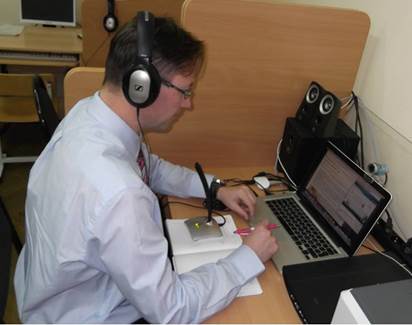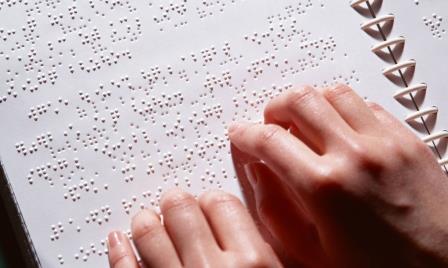References
- Aksyutina Z. A. Methodology-theoretical analysis of the concept of «social education». In: Vestnik Omskogo Universiteta. 2014. № 2. P. 146–151. (In Russ.)
- Ahmetova D. Z., CHelnokova T. A. The conceptual framework of Inclusive Education as an innovative phenomenon in the educational space of Russia. In: Ural'skij gosudarstvennyj pedagogicheskij universitet. 2016. Issue 9. P. 449–459. (In Russ.)
- Bojko P. D. The use of categorical system in the development of the legal and administrative procedure for the development of agro-industrial complex of Omsk region. In: Vestnik Omskogo Universiteta. 2013. № 4. P. 235–241. (In Russ.)
- Boush G. D. Clusters in Economics: scientific theory, research methodology, management concept. Omsk, 2013. 408 p. (In Russ.)
- Boush G. D., Razumov V. I. Forming of concept systems to study objects in economy: application of the dynamic information systems theory to business clusters. In: Vestnik Novosibirskogo gosudarstvennogo universiteta. Seriya: Filosofiya. 2011. Vol. 9. № 4. P. 30–37. (In Russ.)
- Verbitsky A. A., Trunova E. G. Problems of adequacy of the modern education conceptual apparatus. In: Pedagogika. 2017. № 87. P. 3–15. (In Russ.)
- Gavronskaya Yu. Yu. «Interactivity» and «Interactive learning». In: Vysshee obrazovanie v Rossii. 2008. № 7. P. 101–104. (In Russ.)
- Gushcha Yu. V. Concept and nature of Interactive teaching. In: Vestnik Polockogo gosudarstvennogo universiteta. Seriya E, Pedagogicheskie nauki: nauchno-teoreticheskij zhurnal. 2012. № 7. P. 42–45. (In Russ.)
- Doronina E. G., Mozheevskaya A. E. Linguistic basics of creating a multimedia interactive guide to a foreign language. In: Nauka YUUrGU. Sekcii social'no-gumanitarnyh nauk: materialy 67-j nauchnoj konferencii. 2015. P. 1158–1163. (In Russ.)
- Kapranova E. A. Interactive learning: conceptual basis and approaches. In: Vestnik Polockogo gosudarstvennogo universiteta. Seriya «Pedagogicheskie nauki». 2012. № 7. P. 36–41. (In Russ.)
- Kozlova K. S. Post-industrial society as a socio-philosophical object. In: Istoricheskie, filosofskie, politicheskie i yuridicheskienauki, kul'turologiya i iskusstvovedenie. Voprosyteorii i praktiki. 2012. № 5 (19). Part 1. P. 82–88. (In Russ.)
- Korotaeva E. V. Organization of Interactions in the Educational Process of the School, Moscow, 2016. 192 p. (In Russ.)
- Koshkina E. A. The conceptual and terminological apparatus of pedagogy as a subject of historical and pedagogical research. In: Innovacionnye proekty i programmy v obrazovanii. 2013. № 4. P. 11–15. (In Russ.).
- Moskalevich G. N. Interactive learning technology: concept and essence, features and benefits. In: Innovacionnye obrazovatel'nye tekhnologii. 2014. № 1 (37). P. 43–48. (In Russ.)
- Nedoluzhko O. V. A new approach to form the conceptual space of the phenomenon of intellectual capital for an organization. In: Vestnik udmurtskogo universiteta. Seriya «Ekonomika i parvo». 2016. Vol. 26. Issue 2. P. 42–49. (In Russ.)
- Panina T. S., Vavilova L. N. Interactive Learning. In: Obrazovanie i nauka. 2007. № 6 (48). P. 32–41. (In Russ.)
- Prohorov E. P. Terminological apparatus – the conceptual and semantic skeleton of science. In: Vestnik moskovskogo universiteta. Seriya. 10. Zhurnalistika. 2012. № 1. P. 27–38. (In Russ.)
- Razumov V. I., Sizikov V. P. Information bases of system synthesis. Part I. Information bases of the knowledge system. Omsk, 2007. 266 p.
- Razumov V. I., Sizikov V. P. Categorical apparatus for the development of theoretical knowledge. In: Vestnik Omskogo universiteta. 2003. Issue 2. P. 37–40. (In Russ.)
- Sadykov T. M. The interactive technologies background. In: Problemy sovremennogo obrazovaniya. 2016. № 4. P. 158–160. (In Russ.)
- Selevko G. K. Encyclopedia of educational technologies. Part 1. Moscow, 2005. 535 p. (In Russ.)
- Semenova I. N. Formation of the conceptual framework of the technique and technology of training in the conditions of technologization of educational process. In: Vestnik TGPU. 2016. № 4 (169). P. 86–91. (In Russ.)
- Shlyahova I. B. Pedagogical paradigm, theory, problems, search for solutions. In: Teoriya i praktika obrazovaniya v sovremennom mire: materialy VII Mezhdunarnauch konf. Saint Petersburg. 2015. P. 54–64. (In Russ.)
- Shchekina S. S., Averkina G. V. Logical-methodology aspects of studying the conceptual and terminological system of pedagogy. In: Ponyatijnyj apparat pedagogiki i obrazovaniya. 2016. Issue 9. P. 121–135. (In Russ.)
- Izuagba A. C., Nwigwe N. V. Enhancing the teaching and learning of English language interactive strategies. In: ELTAN National Conference. A I F C E. Owerri, Imo State, 2012.
- Olivier J. Blended learning in a first-year language class: Evaluating the acceptance of an interactive learning environment. Cambrige, 2015. 120 p.
- Senthamarai S. Interactive teaching strategies. In: Journal of Applied and Advanced Research. 2018. Vol. 3. P. 36–38.
- Tomljenović Z. An Interactive Approach to Learning and Teaching in Visual Arts Education. In: CEPS Journal: Center for Educational Policy Studies Journal. 2015. Vol. 5. P. 73–93.
- Golovyashkina M. A. Implementation of an interactive paradigm of teaching a foreign language at the level of individual elements of the linguodidactic system [Electronic resource]. In: Obrazovatel'nye resursy i tekhnologii. 2018. № 1 (22). P. 16–22. Electron. dan. DOI: 10.21777/2500-2112-2018-1-16-22 (date of access: 02.01.2021). (In Russ.)
- Kil'dyusheva A. A. Studing a Museum as a category of thinking: experience of application of the of the dynamic information systems theory [Electronic resource]. In: Idei i idealy. 2019. Vol. 11. Issue 2. Part 2. P. 420–438. Electron. dan. DOI: 10.17212/2075-0862-2019-11.2.2-420-438 (date of access: 02.01.2021). (In Russ.)
- Kurtvapova V. M. The conceptual framework of multicultural education [Electronic resource]. In: Vestnik moskovskogo gosudarstvennogo oblastnogo universiteta. Seriya «Pedagogika» [Bulletin of the Moscow State Regional University. Pedagogy science]. 2017. № 3. С. 46–54. Electron. dan. DOI: 10.18384/2320-7219-2017-3-46-54 (date of access: 02.01.2021). (In Russ.)
- Polonskij V. M. Concept-terminological apparatus for pedagogy and education [Electronic resource]. In: Nauchnyj rezul'tat. Pedagogika i psihologiya obrazovaniya. 2017. Vol. 3. Issue. 2. P. 54–60. Electron. dan. DOI: 10.18413/2313-8971-2017-3-2-54-60 (date of access: 02.01.2021). (In Russ.)
- Bagramova N. V., Vasilieva A. V. Interactive Lesson as a Macro-Unit of Teaching Russian as a Foreign Language in Short-Term Courses [Electronic resource]. In: Philological Class. 2020. Vol. 1 (59). P. 171–181. Electron. dan. DOI: 10.26170/FK20-01-17 (date of access: 02.01.2021).
- Ceresia F. Interactive learning environments (ILEs) as effective tools for teaching social sciences [Electronic resource]. In: Procedia – Social and Behavioral Sciences. 2016. Vol. 217. P. 512–521. Electron. dan. DOI:10.1016/J.SBSPRO.2016.02.031 (date of access: 02.01.2021).
- Fahim M., Seidi A. Interaction and Interactive English Teaching in the High School Level [Electronic resource]. In: Theory and Practice in Language Studies. 2013. Vol. 3. Issue 6. P. 932–937. Electron. dan. DOI:10.4304/TPLS.3.6.932-937 (date of access: 02.01.2021).
- Hall J. K., Verplaetse L. S. Second and Foreign Language Learning through Classroom Interaction [Electronic resource]. In: Lawrence Erlbaum Associates. 2000. 314 p. Electron. dan. DOI:10.4324/9781410605498 (date of access: 02.01.2021).
- Knežević S., Kovačević B. Interactive learning and students’ competence in teaching literature. [Electronic resource] In: Metodički obzori. 2011. Vol. 6. Issue 3. P. 83–92. Electron. dan. DOI:10.32728/MO.06.3.2011.06 (date of access: 02.01.2021).
- Lucero E. Scalante-Morales J. English Language Teacher educator integrational styles: Heterogenety and homogeneity in the ELTE classroom [Electronic resource]. In: HOW. 2018. Vol. 25 (1). P. 11–31. Electron. dan. DOI:10.19183/how.25.1.358 (date of access: 02.01.2021).
- Paule-Ruíz M. P. et al. Voice interactive learning: a framework and evaluation [Electronic resource]. In: Conference on Innovation and technology in computer science education (CIiTCSE). New York, 2013. P. 34–39. Electron. dan. DOI:10.1145/2462476.2462489 (date of access: 02.01.2021).
- Seedhouse P. Classroom interaction: possibilities and impossibilities [Electronic resource]. In: ELT Journal. 1996. Vol. 50. P. 16–24. Electron. dan. DOI:10.1093/elt/50.1.16 (date of access: 02.01.2021).












